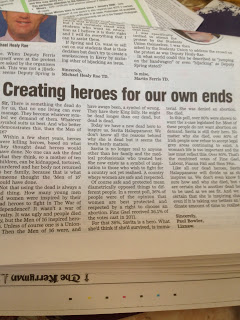(no spoilers)
I’ve been looking forward to writing this review for a number of years now. The project was beset by delay after delay, but fortunately all these setbacks merely served to whet my appetite.
I consulted the hive mind that is the twitterverse, as to the largest cinema screens in Ireland, and I booked tickets for The Odeon and The Savoy. I watched it on a Sunday evening and then the following day.
The film itself? Hmmmmmm. As a Tolkien fan, I loved it. The length, the self-indulgence, the unnecessary back-stories, the length, the reintroduction of old favourites, necessary and superfluous, the length, the beauty of New Zealand, Rivendell, the length, Riddles in the Dark, the snippets of humour and finally the length.
As a fan of film though, oh my Eru, it was fierce long. There was a point in my first viewing where I felt a pang of anger towards Peter Jackson for causing two terms to find their way into my mind. These were franchise and Star War Episode 1. An Unexpected Journey is no Phantom Menace, in that it does not merit the opprobrium poured on the head of Episode 1, but in releasing what is essentially a Director’s Cut, as a theoretical version of a story, that non-nerds won’t be familiar with, Peter Jackson has risked turning this franchise (oh how the snob in me hates that term) into something only those of us who have done the required reading will truly enjoy.
Other criticisms include some of the ‘forced-perspective’ shots not working, Azog looking a bit video-gamish and I can only imagine how enraging the appearance of the eagles will be.
The second time I watched it, I enjoyed it all the more, as I put aside all the problems I saw in the first viewing. The 3D was unobtrusive and as mentioned, it all looked beautiful. Martin Freeman as Bilbo Baggins was a delight. McKellen’s Gandalf the Grey more fun than the colossus that bestrode Lord of the Rings. Richard Armitage as Thorin Oakenshield was wonderful. And finally Gollum was truly excellent. Riddles in the Dark, while not a long scene, was near perfect.
The depiction of the Battle of Azanulbizar though not canon, was brilliantly done. The White Council was very cool and filled with unexpected tension. Though as an aside, I do tire of watching The Lady Galadriel walking so slowly, as if this somehow enhances her gravitas. And Radagast the Brown’s brief encounter with some old enemies was an eye opener. Radagast himself will turn many people off, but I’m ok with the extreme depiction.
I look forward to Part 2, with my enthusiasm undimmed. The money has already been committed to the project, so I know it will be completed. And if Jackson chooses to continue in the vein, then he can expect me to fork over my euros without pause. But I won’t be able to recommend these movies to my non-nerd friends. And I think that unfortunate.There was a huge amount of good will built up by The Lord of the Rings, among the non-initiated. I fear this franchise, well this one film alone, will fritter away all that good will.
Fortunately, HBO’s Game of Thrones is proving successful enough, that I don’t have to overly worry about Jackson single-handedly destroying the genre.
But I have to say, I can’t wait to see it again. And I am giddy at the thought of a Director’s Cut.




